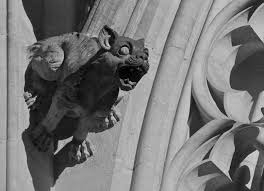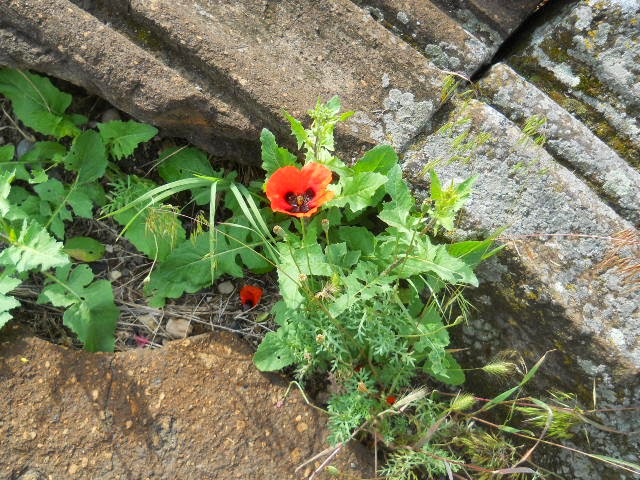Monday, May 19.
Despite our trepidation, our Aeroflot flight to Prague through Moscow was successful. The plane into Moscow was late, leaving only 40 minutes to get to the international terminal. We and our luggage made it. Aeroflot crew uniforms still sport the hammer and sickle.
Aeroflot airplane meals for lunch and sausage quiche from pastry shop for dinner.
Tues, May 20
Our rented apartment is OK. Near the sites, very clean, all new IKEA, defective shower door (small flood), located on a dreary street with construction and graffiti.
The nearby Tesco Department Store sold us a computer to replace the chromebook that died on us. The $400 replacement is pretty slow and uses Windows 8. It is hard to describe how idiotic and unusable that operating system is. We will get a refund of the VAT, about $80.
Tesco's basement has a nice supermarket. Our first try with a Czech wine, a svatovavrinecke, was not a great success, but Bruce was able to finish it over the next few days/.
We worked to get the travel blog up to date. Completed May 10.
Wed, May 21
We were up early and found two tickets to tonight's Prague Music festival concert online. Only four left. We had the usual difficulties working with a strange website in a foreign country and with a new computer. Eventually, we loaded the etickets on a thumb drive, but we could not get the coin operated printer machine at the Tesco to read it.
We spent a few hours at the Prague Castle (Hrad), mostly at the St Vitus Cathedral. It is a late Gothic one, designed by Peter Parler, one of the very few medieval architects we know by name. His tomb is here:
We can not figure put where we know his name from, but we both immediately recognized it. Wikipedia places him in Prague and not in the other cathedral towns we have previously visited.
The legend is that St Vitus was an early Christian that stuck to his faith and survived torture unscathed, i.e, not a martyr. The fact is that his cult is very early and nothing is known of him as an historical figure.
As with almost every gothic cathedral, building started with the apse. Construction of the apse began in 1344. But construction of the nave was delayed and the consecration of the church did not take place until 1929. This is one of the longest cathedral construction projects.
By the late gothic, windows were very large. Here, very high windows of the (expanded) triforium and clerestory merged and covered virtually the entire wall above the aisles. Note how the windows above the railing come out to meet the columns, a nice device we do not recall seeing elsewhere.
The guide book says that this is two tons of silver.
Curious to know who deserved so much silver, Leslie turned to catholic.com. It appears that there may have been two Johns of Nepomuk conflated into one saint. The important myth is that he was confessor to the wife of the king. The king wanted information from her confession, specifically the name of the lover he thought she had. John refused and was tortured and drowned in the Moldau. Thus, he was sainted for refusing to break the secrecy of the confessional, an important precedent.
Parler designed two very elaborate rooms. Here's one:
The exterior would be very imposing, had there not been the unfortunate construction of various buildings quite close to the cathedral and spoiling the exterior perspective.
The flying buttresses are especially fine.
We admired the gargoyles.
Lunch at an outdoor café. There was a very nice, but weird, Scottish lady at our table. Crappy food.
The Cathedral Museum was rich in artifacts extracted from tombs that had accumulated, including many items of great historic importance to the Czechs. But, frankly, it was much more than we could be interested in.
We ended the castle visit at the Romanesque Basilica of St. George, over 1000 years old.
After a stop at the concert hall to have our tickets printed, we took a short rest.
The concert was at the Dvorak Theater in the Rudolfinum.
Stravinsky "Dumbarton Oaks"; Messaien "O sacrum convivium"; Beethoven Fantasie in C Minor for Piano, Chorus, and Orchestra and Emperor Concerto. The encore was a Beethoven Bagatelle. Leif Ove Andsnes conducted and played the piano for the Beethovens. Andsnes turns out to be a terrific performer. He almost made the Fantasie piece sound good. He leads the Mahler Chamber Orchestra. They are members of the Mahler Youth Orchestra who wanted to stay together as a group (encouraged by Claudio Abbado). They were very engaged and energetic.
Thursday May 22
Our brains are too weary to take in another alien history with difficult names. So we are just enjoying the architecture and the music.
Bruce returned the computer as it refused to boot up. This was quite a long procedure as electronics are not returnable here. He had to demonstrate that it really did not work.
We went back to the castle. We saw the picture gallery, a real miss. The concert was at the St George's basilica. The music was trite and some 20 - 30 small bits in an hour. But the acoustics were amazing and it was worth it to hear the big sound produced by five strings.
Dinner mixed meat, stewed duck, ham, sausage, and dreadful dumplings.
Friday, May 23.
We spent most of the day at the Jewish Quarter. The Jewish community was confined to a ghetto until the 1790s. It was crowded. The cemetery was filled 10 graves deep -- 100,000 in a pretty small area.
There were five synagogues, four open. One serves as the
holocaust museum, with names and dates written on the walls. Two serve as
Judaica museums. The Old New Synagogue (I did not name it) is the oldest
functioning synagogue Europe.
The most impressive sight, to us, was the Spanish Synagogue.
This name apparently comes from the decor, as it is a German reform
congregation founded in 1868. The interior is very elaborately embellished.
However it serves as a Judaica museum and music venue (no interestingly
concerts during our stay). With the exception of the Old New, one
does not get the sense of a place of worship.
We enjoyed a free choral concert given by the Mastersingers from
Cookeville, Tenn. They sang for an hour. Wonderful Haydn Te Deum, parts from
Mozart's Requiem, some Schubert and Medelssohn. The American pieces were new to
us (gospel and spirituals) except for So Long, Farewell from the Sound of Music.
The venue was St. Nicolas in the Old town Square.
It was pretty warm and we made it back to our apartment just before the weather broke.
Dinner: Meinl gourmet store - lovely 24 month Comte, raspberry pie.
Saturday, May 24
Prague created a cubist architecture. Our out-of-date guidebook steered us to the Cubist Museum which was housed in one of the two remaining cubist buildings. The Cubist Museum does not exist today. Why is this "cubist"?
We walked across the Charles Bridge and in The old town.
We window shopped particularly glass. We restrained ourselves from purchasing. We walked to the Monument to the Victims of Communism. Very effective.
We window shopped particularly glass. We restrained ourselves from purchasing. We walked to the Monument to the Victims of Communism. Very effective.
From 1948 until the collapse, a communist regime was kept in power by the Soviet Army. The bronze strip going up the center recites grim statistics: 200,000 people arrested for political crimes, 170,000 exiles, 4500 died in prison, etc.
Then we took the river cruise. The
narrative was annoying and not helpful.
We continued this time by taxi to the Mineralum, a store with a museum. The minerals were amazing.
It was a 10 hour day out and we are tired.
We caught the subway back to the apartment for a bread, cheese, and salami meal. Our food and wine is almost gone; we will eat out tomorrow.
Sunday, May 25
Chron context|: Wendy's sale closed. Camera broken.
We took the subway to Veletrzni Palace, the Art gallery run by the City of Prague. The 5th and 4th floors were devoted to Czech arts, applied arts, architecture, etc. There seemed to be an unusual bias toward dreariness. Bruce liked the later abstract works of Frantizek Kupka.
The 3rd floor contained the international collection. Picasso, Signac, Pissarro, Courbet, and other 19th and 20th century European items. They have a Van Gogh, Green Wheat, 1889, and a few exceptional Utrillos.
Café Colore: goose breast
.JPG)















.JPG)
















































